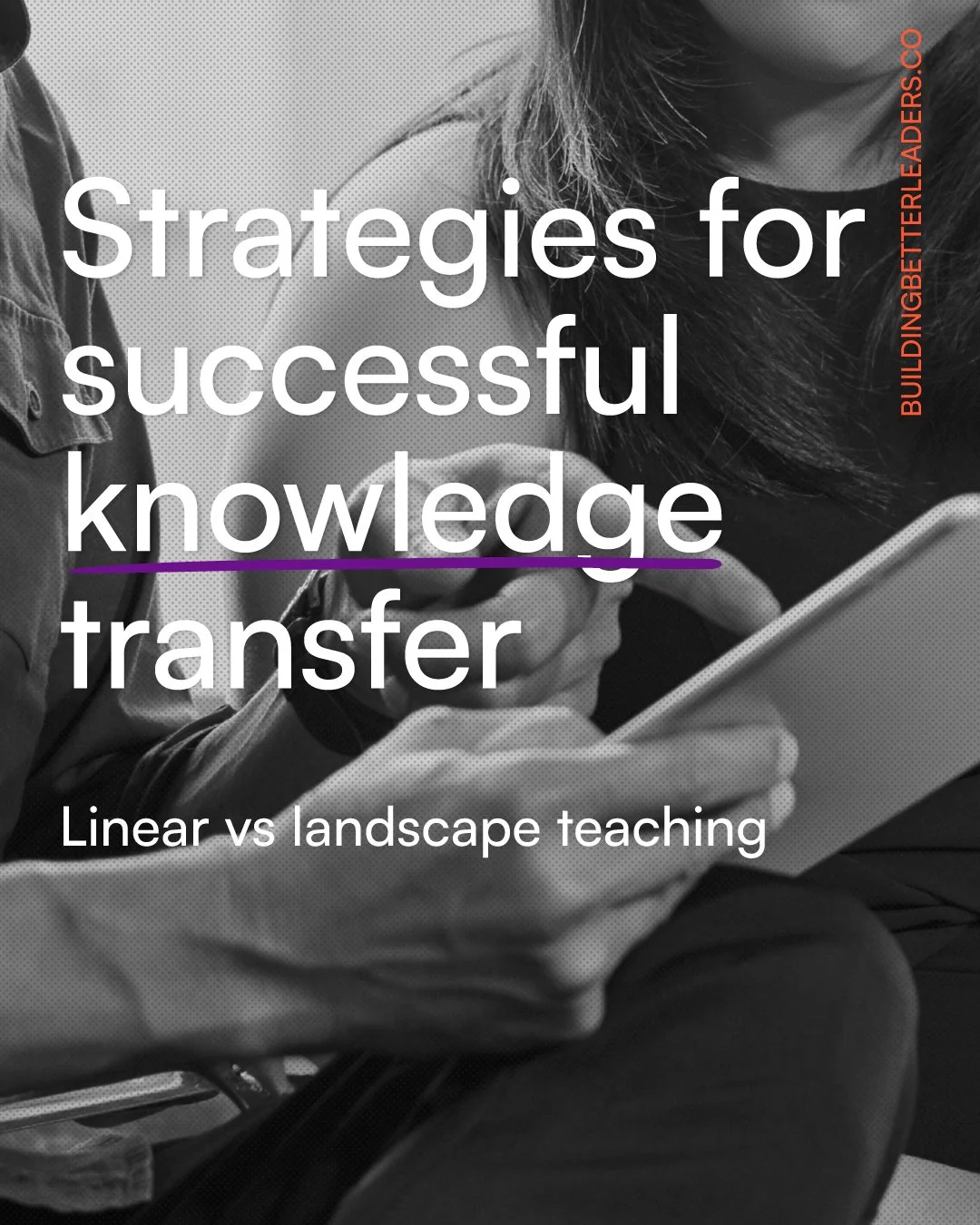How to transfer knowledge effectively to juniors
When I was a new manager, I made a classic mistake. I transferred knowledge linearly.
Step 1, then Step 2, then Step 3…
It worked until it didn’t.
Here was what happened. Whenever a junior hit a roadblock, they’d get stuck. I’d feel frustrated, “I already told them what to do!” That’s when I realized:
👉 Knowledge transfer isn’t just about the steps.
👉 It’s about the “landscape”.
Think of it like giving directions to someone who’s lost.
📍 Linear: “Take 3 lefts, then a right at the 2nd junction.”
📍 Landscape: “You’ll see a red building on your left. Turn when you spot it.”
The second approach gives context. So, even if they miss a step, they can still find their way.
That’s how I began building a strategy for intentional and structured knowledge transfer. Here’s how you can do the same 👇
1. Strategies for Successful Knowledge Transfer
Linear vs Landscape Teaching
2. Identify the Critical Knowledge
Not all knowledge needs transferring. Focus on what truly matters. Examples:
Core processes eg. The workflow of onboarding a new client
Decision-making logic eg. Why we delay launching if the customer onboarding is not ready
Nuanced insights eg. If a new client keeps pushing deadlines, it’s often a red flag. Quickly reset expectations early.
Ask yourself:
“What does this junior need to navigate independently?”
3. Teach the Landscape, Not Just the Steps
Go beyond “how to”. Explain the “why” and the “when.”
Share the context
Use real-life case studies
Talk through scenarios and options
This builds mental maps, not just task lists.
4. Structure the Transfer
A consistent structure makes learning stick. Examples:
SOPs & checklists
Process flowcharts
“What I wish I knew” playbooks
Think of it as building their GPS, not just handing them a map.
5. Let Them Try (With Guardrails)
Experience deepens knowledge.
Assign real tasks
Provide close coaching
Run debrief sessions after each task
Let them struggle safely. That’s where growth lives.
6. Use Feedback Loops
Check for understanding, not just completion.
Encourage questions
Ask them to explain it back to you
Adjust based on what they missed
This strengthens learning.
7. Make It a Relationship, Not an Event
Knowledge transfer happens over time; not in one sitting.
Schedule regular check-ins
Create space for story-sharing
Assign mentors
Connection and consistency makes the knowledge stick.
When Done Right, Knowledge Transfer Is About Preserving Wisdom.
You’re not just offloading tasks.
You’re building future leaders.
Lead the Change
In closing, being visible for your values and your competence does not make you less authentic. It makes your authenticity seen. But don’t stop there. Use this power to shine a light on the overlooked and lift them up.

